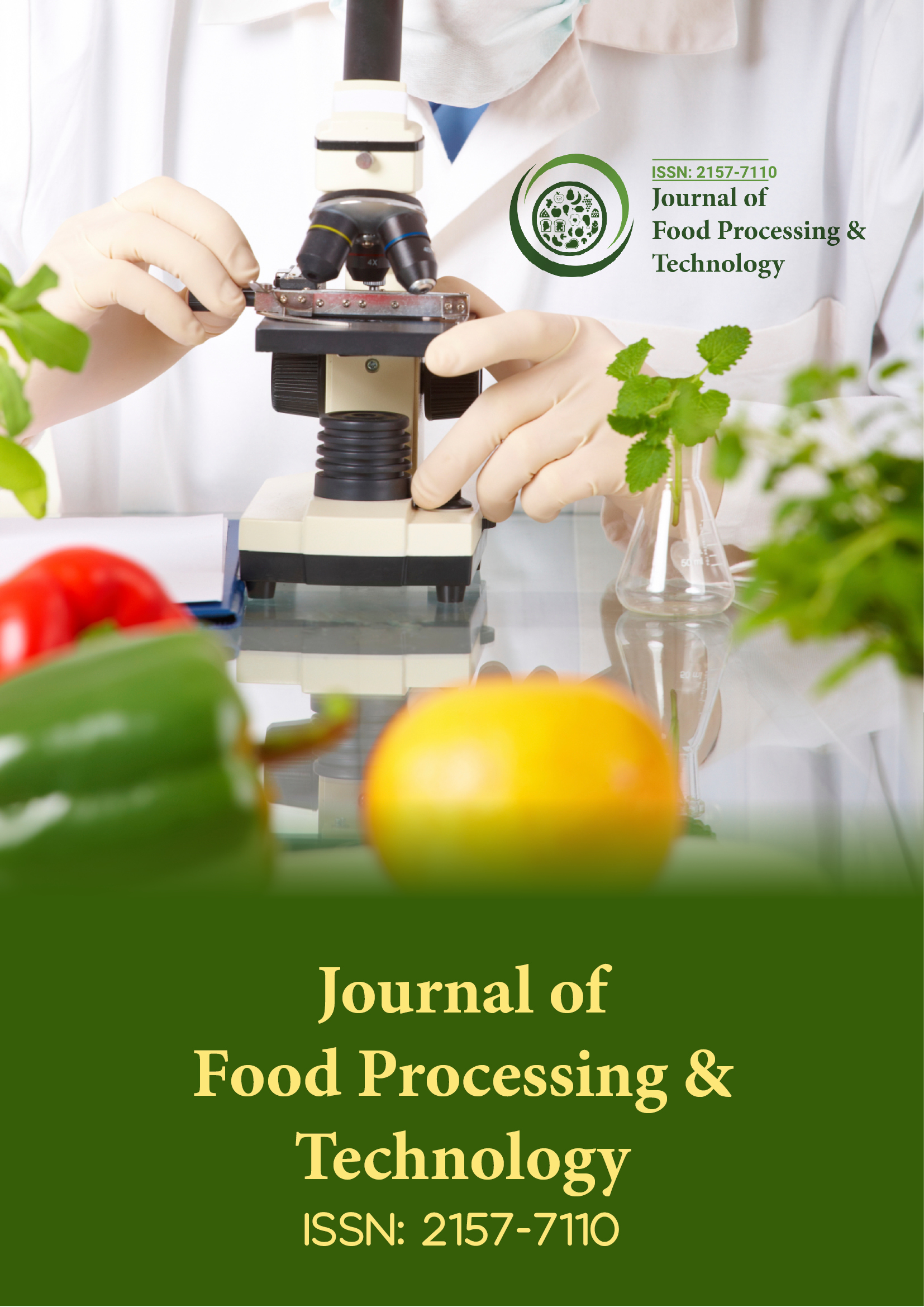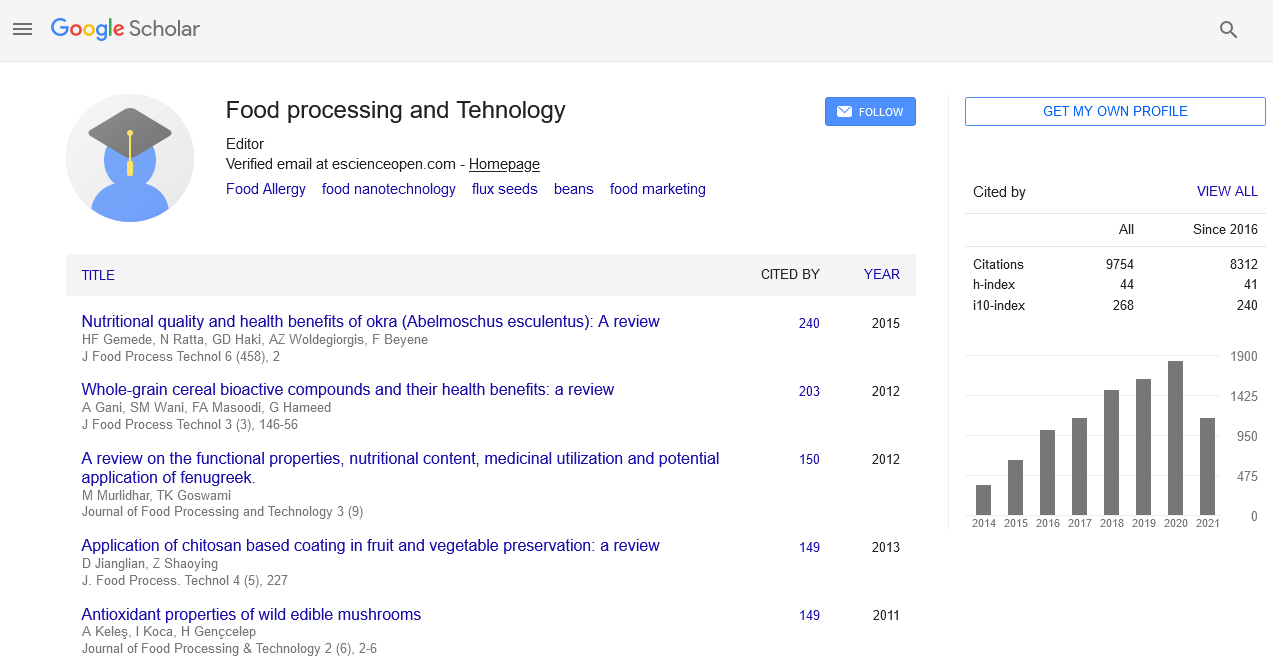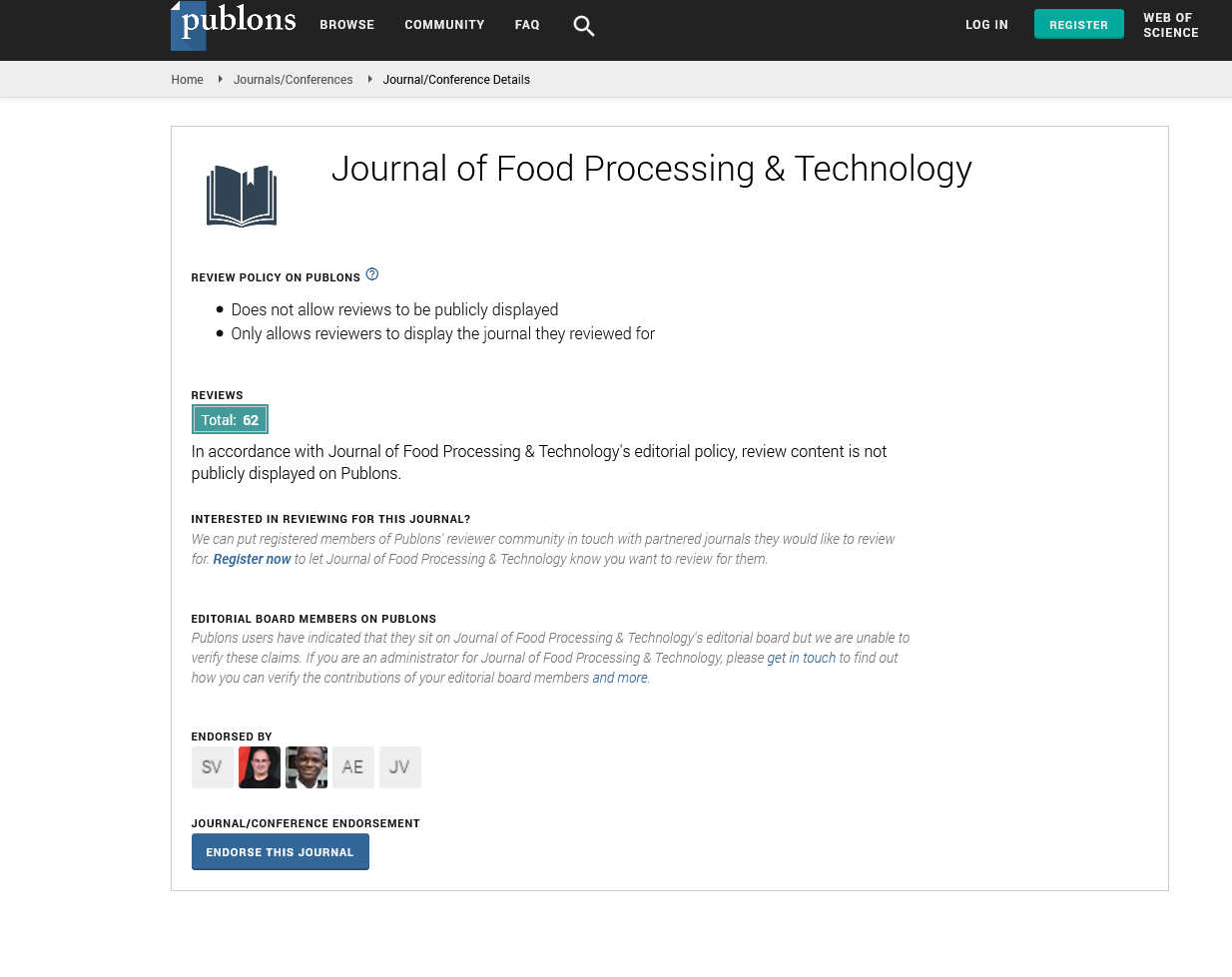Indexed In
- Genamics JournalSeek
- Academic Keys
- JournalTOCs
- China National Knowledge Infrastructure (CNKI)
- Access to Global Online Research in Agriculture (AGORA)
- Centre for Agriculture and Biosciences International (CABI)
- RefSeek
- Directory of Research Journal Indexing (DRJI)
- Hamdard University
- EBSCO A-Z
- OCLC- WorldCat
- Scholarsteer
- SWB online catalog
- Publons
- Euro Pub
- Google Scholar
Useful Links
Share This Page
Journal Flyer

Open Access Journals
- Agri and Aquaculture
- Biochemistry
- Bioinformatics & Systems Biology
- Business & Management
- Chemistry
- Clinical Sciences
- Engineering
- Food & Nutrition
- General Science
- Genetics & Molecular Biology
- Immunology & Microbiology
- Medical Sciences
- Neuroscience & Psychology
- Nursing & Health Care
- Pharmaceutical Sciences
Perspective - (2025) Volume 16, Issue 2
The Role of Probiotics in Functional Food Development
Daniel Weber*Received: 28-Mar-2025, Manuscript No. JFPT-25-29642; Editor assigned: 31-Mar-2025, Pre QC No. JFPT-25-29642; Reviewed: 14-Apr-2025, QC No. JFPT-25-29642; Revised: 22-Apr-2025, Manuscript No. JFPT-25-29642; Published: 28-Apr-2025, DOI: 10.35248/2157-7110.25.16.1156
Description
In recent years, probiotics have become an essential focus in food science and human nutrition. These live microorganisms, when consumed in suitable quantities, contribute to overall health and well-being. They are most recognized for their beneficial influence on the digestive system and immune function, but research has revealed much broader effects. By interacting with the body’s internal microbial environment, probiotics help sustain a balanced gut ecosystem, which is increasingly viewed as fundamental to both physical and mental health. The human digestive tract is home to trillions of microorganisms that form a complex community known as the gut microbiota. This microbial population influences digestion, nutrient absorption, metabolism and immune responses. When this balance is disturbed by poor diet, stress, antibiotics, or infections various health problems can arise, including constipation, diarrhea, obesity and inflammatory conditions. Restoring this equilibrium through the intake of beneficial microbes has become an effective nutritional strategy. Probiotics such as Lactobacillus, Bifidobacterium and Saccharomyces boulardii are among the most widely studied organisms for this purpose. They enhance digestion, support immune defense and help reduce harmful bacteria that can cause illness.
Traditionally, fermented dairy products like yogurt and kefir were the main sources of probiotics. However, changes in consumer lifestyles and dietary preferences have inspired food manufacturers to create new non-dairy options. Today, probiotic cultures are added to cereals, fruit juices, smoothies, snack bars and even chocolate. These products appeal to a wider audience, including individuals with lactose intolerance or those following vegan diets. Expanding beyond traditional carriers has made probiotics accessible to more people and integrated them into daily eating habits. A major challenge in this field involves keeping probiotic organisms alive throughout food processing, packaging and storage. These microorganisms are sensitive to temperature, oxygen exposure and acidic environments, all of which can reduce their survival rate before they reach the intestines. To overcome this, researchers and food technologists are turning to protective technologies such as microencapsulation. In this process, probiotic cells are coated with materials like alginate, starch, or protein-based matrices that protect them from harsh conditions. This method ensures that a significant portion of the live bacteria survives until they reach the intestinal tract, where they become active and beneficial. Microencapsulation has not only improved probiotic stability but has also expanded the number of food products capable of carrying them effectively.
Another development in the functional food sector is the rise of synbiotic products, which combine probiotics with prebiotics non-digestible fibers that stimulate the growth of beneficial bacteria already present in the gut. Prebiotics such as inulin, fructooligosaccharides and resistant starch create a favorable environment for probiotics to flourish. When combined, the result is a synergistic effect that enhances digestive health, supports mineral absorption and can even improve mood and metabolic balance. Synbiotic foods offer a more comprehensive approach to maintaining gut health and are gaining increasing commercial importance. It is now well recognized that not all probiotics act in the same way. Each strain has distinct properties and potential benefits. Some improve lactose digestion, others may help prevent antibiotic-associated diarrhea, while certain strains have been linked to lower cholesterol levels or reduced inflammation. Because of these differences, choosing the right strain for a specific health outcome is a key step in product formulation. Companies are investing heavily in clinical studies to validate the effects of their selected strains. This evidencebased approach helps establish credibility and ensures that consumers receive genuine health benefits rather than unsupported marketing claims.
From an economic perspective, the probiotic industry continues to expand globally. Markets in Asia and Europe show the highest growth, driven by increasing awareness of preventive health care and rising disposable incomes. Consumers are more inclined to purchase foods that contribute to long-term wellness, viewing them as an investment in better health. However, strict regulations exist regarding the labeling of probiotic products. Health claims must be supported by scientific research before they can appear on packaging or advertisements. This regulatory oversight protects consumers and encourages companies to focus on genuine innovation. Scientific research is also exploring next-generation probiotics derived from lesser-known microbial species. Advances in genomic and metagenomic techniques are enabling scientists to identify new microorganisms with unique health benefits. These include strains that may reduce inflammation, support metabolic balance, or influence brain function through the gut-brain axis. As knowledge grows, it may become possible to design probiotic formulations aimed at specific conditions, ranging from allergies and diabetes to mental health disorders.
Citation: Weber D (2025). The Role of Probiotics in Functional Food Development. J Food Process Technol.16: 1156.
Copyright: © 2025 Weber D. This is an open access article distributed under the terms of the Creative Commons Attribution License, which permits unrestricted use, distribution and reproduction in any medium, provided the original author and source are credited.


